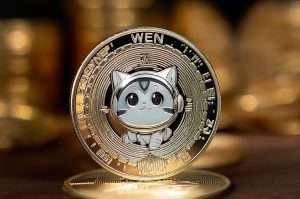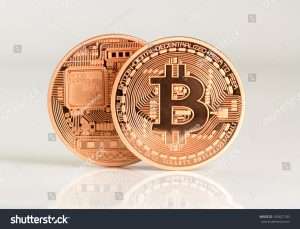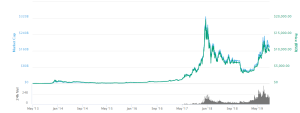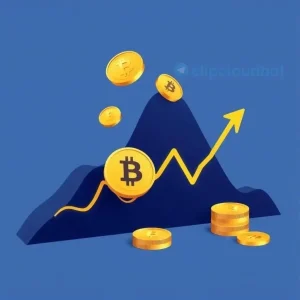Bitcoin Art: A Revolution in the Digital Art World
Explore the electrifying world of Bitcoin art! Discover how this revolutionary cryptocurrency fuels a new wave of digital masterpieces, challenging traditional art boundaries and creating exciting new markets. Dive into the fusion of finance and fine art.
The intersection of art and technology has always been a fertile ground for innovation. From the advent of photography to the rise of digital art, creative expression consistently adapts to new mediums. Now, a revolutionary force is reshaping the artistic landscape: Bitcoin. This cryptocurrency, initially conceived as a purely financial tool, is unexpectedly finding its place as a muse, a medium, and a market disruptor within the art world, creating a vibrant and evolving genre known as Bitcoin Art.
The Genesis of Bitcoin Art: From Cypherpunk Ideals to Artistic Expression
Bitcoin’s origins lie within the cypherpunk movement, a group advocating for strong cryptography and digital privacy. This ethos of decentralization and anonymity directly influences the spirit of Bitcoin art. Early explorations in this field often focused on the technical aspects of the blockchain itself, using its immutable ledger as a canvas for artistic expression. Artists began to experiment with representing transactions, cryptographic hashes, and the very code underlying Bitcoin as artistic elements.
Early Pioneers and Defining Characteristics
The early adopters of Bitcoin art were often tech-savvy individuals who understood both the technical intricacies of the cryptocurrency and the aesthetic possibilities it presented. These artists weren’t simply using Bitcoin as a payment method; they were integrating its core principles – decentralization, transparency, and immutability – into their artistic practice. This early work often lacked the polish and visual appeal we associate with more mainstream art forms, reflecting the nascent stage of the genre. However, it laid the foundation for future innovations.
A defining characteristic of early Bitcoin art was its conceptual nature. The focus was less on visually stunning pieces and more on exploring the philosophical and social implications of Bitcoin itself. Many works involved the creation of unique digital assets linked to Bitcoin transactions, establishing a direct connection between the artwork and the blockchain. This connection ensured authenticity and provided a unique form of provenance, a crucial element in the art world.
The Evolution of Bitcoin Art: From Code to Canvas
As Bitcoin’s popularity grew, so did the diversity of Bitcoin art. Artists began to explore a wider range of mediums and styles, moving beyond the purely technical representations of the early days. The concept of Non-Fungible Tokens (NFTs) revolutionized the field, providing a new framework for creating, owning, and trading digital artwork linked to the blockchain. This allowed for greater accessibility and broadened the appeal of Bitcoin art to a wider audience.
NFTs and the Democratization of Bitcoin Art
The advent of NFTs significantly democratized Bitcoin art. Before NFTs, selling and verifying ownership of digital art was a complex and often unreliable process. NFTs provided a secure and transparent solution, allowing artists to easily mint and sell their digital creations on various online marketplaces. This accessibility fueled a surge in creative output, leading to an explosion of diverse styles and approaches within the Bitcoin art community.
The ability to easily verify ownership through the blockchain has also dramatically increased the value and collectability of Bitcoin art. The inherent scarcity of NFTs, coupled with the transparency of the blockchain, provides a level of trust and security that was previously lacking in the digital art market. This has attracted both established collectors and new investors, further driving the growth of the genre.
The Impact of Bitcoin Art on the Broader Art World
Bitcoin art is not just a niche phenomenon; it’s having a profound impact on the broader art world. Its embrace of digital technologies and its decentralized nature challenge traditional notions of art ownership, authenticity, and value. By utilizing blockchain technology, Bitcoin art is pioneering new models for art creation, distribution, and ownership, potentially transforming the future of the art market.
Challenging Traditional Art Market Structures
The traditional art market is often criticized for its opacity, high transaction costs, and centralized control. Bitcoin art, through its use of blockchain technology, offers a stark contrast. The transparent and immutable nature of the blockchain allows for greater transparency in art provenance and ownership, reducing the risk of fraud and forgery. The decentralized nature of the Bitcoin art market also empowers artists by reducing their dependence on intermediaries such as galleries and auction houses.
The lower transaction costs associated with trading Bitcoin art on online marketplaces also make it more accessible to a wider range of artists and collectors. This democratizing effect is further amplified by the ability for artists to directly connect with their audience and bypass traditional gatekeepers, fostering a more direct and participatory art ecosystem.
The Future of Bitcoin Art: Trends and Predictions
The future of Bitcoin art is brimming with possibilities. As blockchain technology continues to evolve, we can expect to see further innovation in the creation, distribution, and ownership of digital art. The integration of augmented reality (AR) and virtual reality (VR) technologies could create immersive and interactive experiences for viewers, blurring the lines between the physical and digital realms.
Emerging Technologies and Artistic Exploration
The integration of artificial intelligence (AI) in Bitcoin art is another exciting development. AI algorithms can be used to generate unique and unpredictable artwork, pushing the boundaries of artistic creativity. Moreover, AI can assist artists in the creation process, providing tools for collaboration and experimentation. This collaboration between human creativity and artificial intelligence promises to produce stunning and innovative works of art.
The metaverse, a persistent, shared, 3D virtual world, also presents exciting opportunities for Bitcoin art. Artists can create and display their work within virtual galleries and museums, reaching a global audience in immersive and interactive environments. This offers a new level of engagement and accessibility, further expanding the reach and impact of Bitcoin art.
The Social and Cultural Significance of Bitcoin Art
Beyond its technical innovations, Bitcoin art carries significant social and cultural implications. It reflects a growing desire for decentralized and transparent systems, a rejection of traditional power structures, and a celebration of digital creativity. As such, it serves as a powerful commentary on the changing relationship between art, technology, and society.
Decentralization and Artistic Freedom
Bitcoin art’s decentralized nature empowers artists by giving them greater control over their work and its distribution. It allows them to bypass the traditional gatekeepers of the art world, fostering a more inclusive and democratic artistic landscape. This freedom enables artists to explore new ideas and push creative boundaries without the constraints of established hierarchies.
The transparent and immutable nature of the blockchain also offers a new level of authenticity and provenance for digital art. This counters the challenges of verifying authenticity and ownership in the digital world, creating a more secure and reliable system for artists and collectors alike. This increased trust fosters a thriving ecosystem where artists can confidently create and share their work.
- Increased accessibility for artists and collectors.
- Enhanced transparency and security in art transactions.
- Empowerment of artists through decentralization.
- Exploration of new artistic mediums and techniques.
The emergence of Bitcoin art marks a significant shift in the art world. It’s a testament to the power of technology to reshape creative expression and redefine our understanding of art itself. The marriage of digital currency and artistic vision has yielded a dynamic and innovative genre, constantly evolving and pushing the boundaries of what art can be.
- The integration of AI and VR technologies promises new artistic possibilities.
- The metaverse provides a new platform for exhibiting and experiencing Bitcoin art.
- The evolving blockchain technology will continue to shape the future of the genre.







